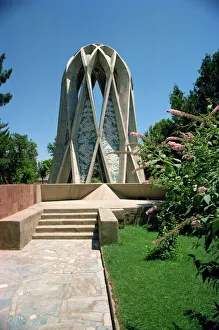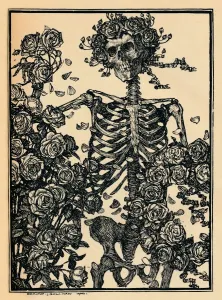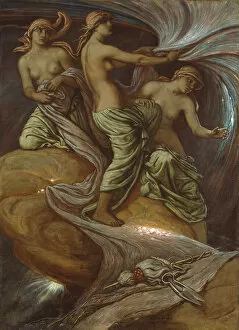Omar Khayyam Collection
The tomb of Omar Khayyam stands as a testament to the enduring legacy of this Persian poet and polymath
All Professionally Made to Order for Quick Shipping
The tomb of Omar Khayyam stands as a testament to the enduring legacy of this Persian poet and polymath. Located in Nishapur, Khorasan Razavi Province, Iran, the Omar Khayyam mausoleum is a place where admirers can pay homage to his brilliance. One cannot help but be captivated by the enchanting illustrations that accompany The Rubaiyat of Omar Khayyam. Created by Edmund Joseph Sullivan in 1900, they bring to life the profound words penned by this literary genius. In one such illustration titled "The Moving Finger writes; and, having writ, " we are reminded of the inexorable passage of time and how our actions shape our destiny. Elihu Vedder's masterpiece from 1887, "The Fates Gathering in the Stars, " further emphasizes this theme with its celestial depiction of destiny unfolding. As we delve deeper into Omar Khayyam's world, we discover intricate designs adorning the inside cover of his works. The floral patterns on lecant morocco leather transport us to an era when craftsmanship was revered and beauty was celebrated. "The Roll of Fate" painted by Granville Bantock in 1882 captures our imagination with its vivid portrayal of life's unpredictable twists and turns. It serves as a reminder that even great minds like Khayyam grappled with questions about fate and free will. Engravings depicting the Tomb at Naishapur allow us glimpses into history while transporting us to Iran once more. These engravings evoke a sense of reverence for this poetic luminary who continues to inspire generations through his timeless verses. William Mouat Loudan's poignant artwork titled "Alas that Spring should Vanish with the Rose" encapsulates both beauty and transience – themes often explored in Khayyam's poetry. This piece reminds us to cherish every fleeting moment, for life's ephemeral nature is as delicate as a rose.












